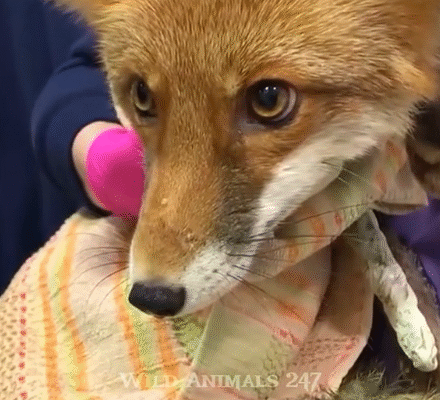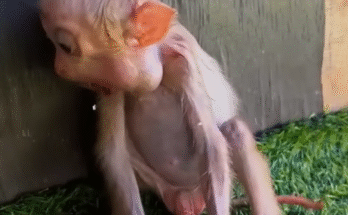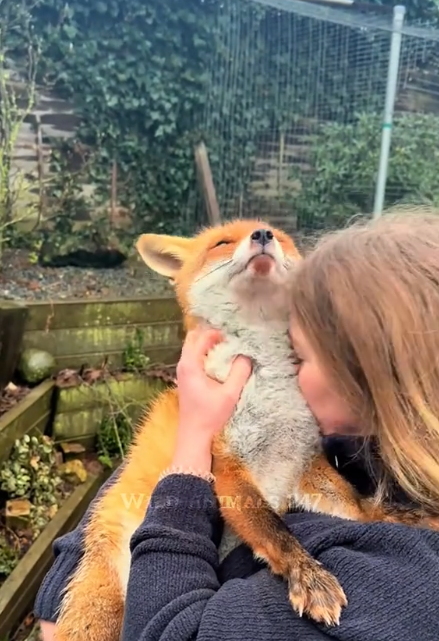
In the heart of the dense woodland, where the trees stood tall and the wind whispered through the leaves, a small fox named Finley lived a quiet and humble life. His fur, once vibrant and fiery orange, had dulled over time due to hardship. Finley was a young fox, barely past his first year, but life had not been kind to him. He had lost his mother during a thunderstorm when their den flooded, and he’d been surviving alone ever since.
Food was scarce, and the cold nights were often unbearable. Finley had learned how to sneak into nearby farms to find scraps, but it was risky. The humans feared foxes. To them, Finley was a threat to their chickens, a nuisance to be chased away. He never meant harm—he just wanted to live.
One day, Finley’s fragile world crumbled further. While scavenging near a small village, he was caught in a cruel steel trap hidden under leaves. The sharp metal clamped tightly around his front leg, and pain surged through his body. He cried out in agony, but no one came. For hours, he struggled, whimpering, his little heart pounding in fear. Each attempt to free himself only worsened his injury.
Rain began to fall again, cold and relentless. Finley lay still, shivering and afraid. His strength was fading. He thought of his mother, of the soft fur she used to wrap around him, and he closed his eyes.
But fate, it seemed, had other plans.
Just before dusk, a girl named Lily was walking home from school through a shortcut in the woods. She often took this path because she loved animals and nature. Her backpack was filled with books about wildlife, and her eyes constantly scanned the forest floor for interesting discoveries.
That day, she heard something—a faint cry, almost like a kitten meowing. Curious and concerned, she followed the sound until she saw Finley. Her heart broke at the sight of the little fox, trembling and trapped.
“Oh no, you poor thing,” Lily whispered, crouching slowly to avoid frightening him further.
Finley tried to move, but the pain stopped him. He stared into Lily’s eyes—eyes filled with kindness and worry, not fear or anger. For the first time, he felt hope.
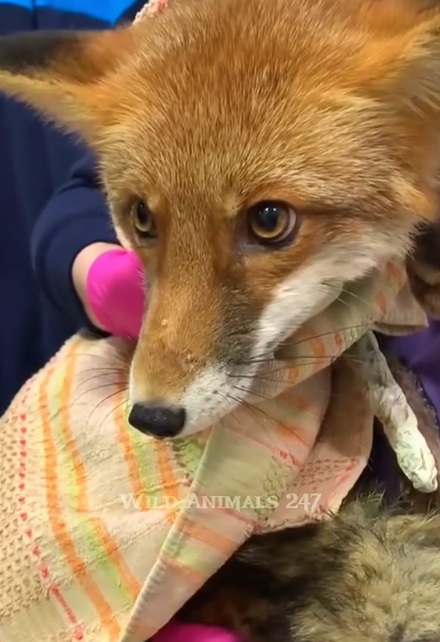
Lily carefully pulled out her phone and called her father, who was a veterinarian. “Dad, I need your help. I found an injured fox in a trap. Please come quickly!”
Her father, Dr. Morris, arrived within 15 minutes, bringing a first-aid kit and bolt cutters. Together, they gently released Finley from the trap. Dr. Morris examined the wound and said, “He’s lucky. It’s bad, but treatable. We need to take him to the clinic.”
Finley didn’t resist. He was too weak, but more than that—he sensed they wanted to help.
Over the next few weeks, Finley stayed in a quiet room at the veterinary clinic. Lily visited him every day after school, bringing soft blankets and fresh food. She talked to him softly, read him stories, and even gave him a name—Finley.
The bond between them grew. Finley began to heal. His fur regained some of its shine, and his eyes lit up whenever Lily entered the room.
However, not everyone in the town was happy about the fox’s presence. Some villagers complained to the mayor, worried that Finley would attack livestock or children once he was released.
“He’s a wild animal!” one farmer shouted at a town meeting. “You can’t trust him. What if he bites someone?”
“He’s just trying to survive,” Lily argued, standing bravely beside her father. “Wouldn’t you want help if you were suffering?”
Dr. Morris supported her. “Wildlife rescue is not about taming animals. It’s about compassion and balance. Finley won’t be released here—he’ll go to a protected sanctuary where he can live freely and safely.”
That calmed most people, though a few still grumbled. But Lily was undeterred. She had seen Finley’s soul through his pain and fear, and she knew he was more than just a wild fox—he was a symbol of resilience.
A month later, with his leg fully healed, Finley was strong enough to travel. Lily was both happy and heartbroken. She had grown to love him, and the thought of letting him go was difficult.
At the sanctuary, a wide-open forest awaited Finley, filled with other rescued animals. The caretakers gently opened his carrier, and Finley stepped out cautiously. He looked back at Lily one last time. Their eyes met, and she whispered, “Be safe, little fox. Live a good life.”
Then, he ran into the trees, free at last.
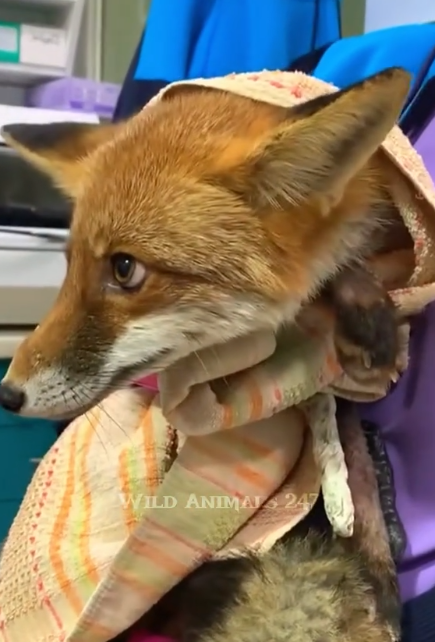
A Message Beyond the Story
The tale of Finley, the poor fox, is not just about one animal’s suffering and rescue. It reflects the greater struggle of wildlife around the world—animals forced to live near humans, hunted, trapped, misunderstood, and hurt. Every year, countless wild animals are injured by traps, lose their habitats, or die due to human carelessness.
But Finley’s story also shows the power of kindness and action. One person—just one child—made a difference. Lily chose compassion over fear, action over indifference. She didn’t turn away when she saw suffering. She stepped in.
We can all be like Lily.
If you see an animal in distress, call your local wildlife rescue or veterinarian. Avoid using or supporting harmful traps. Support sanctuaries and organizations that protect wildlife. Teach others, especially children, to respect and care for the creatures we share this world with.
Animals cannot speak for themselves. But we can be their voice.
So let’s remember: every life matters. Even the smallest. Even the wildest. And sometimes, saving one poor fox can start a wave of hope that touches many more lives than we ever imagined.
